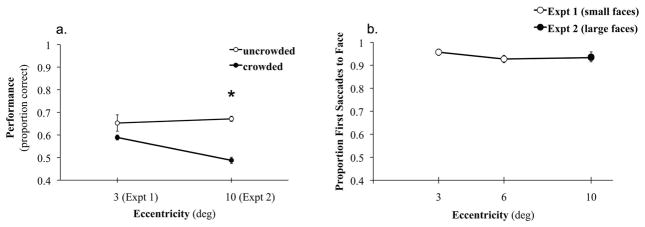Figure 5.
(a) Infants’ orientation discrimination performance (first saccade score) for the larger uncrowded faces at 10 deg was equal to performance observed in Experiment 1 for smaller uncrowded faces at 3 deg, suggesting that infants can distinguish a face at 10 deg. Flankers around the large face at 10 deg reduced discrimination to chance. This confirms that discrimination in the periphery is limited most fundamentally by crowding, not just visibility or acuity. Asterisk indicates significant differences between pair-wise comparisons (p < 0.05). Error bars represent ± SEM. (b) proportion of trials at each eccentricity in which a face (either the upright or inverted) was correctly localized.

